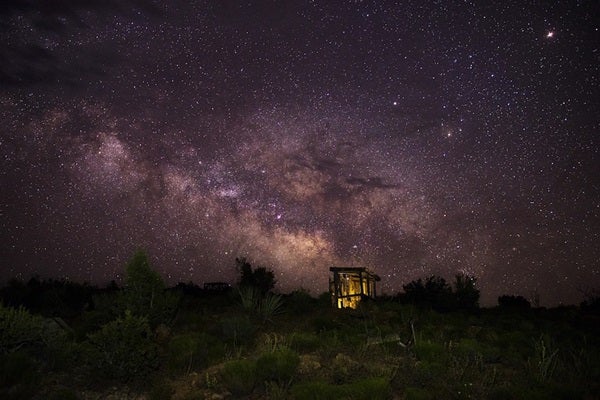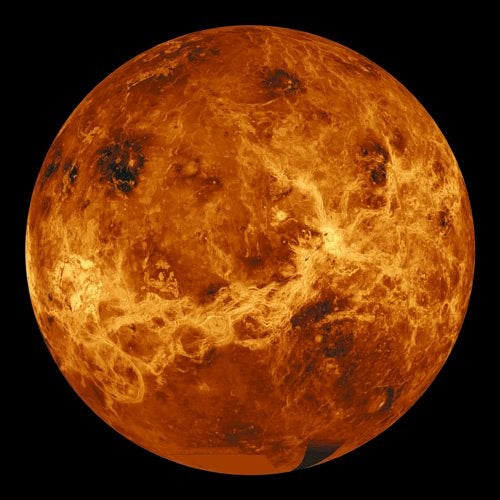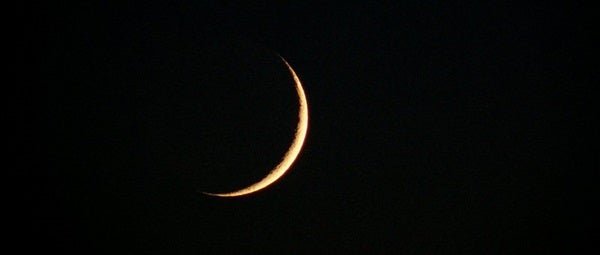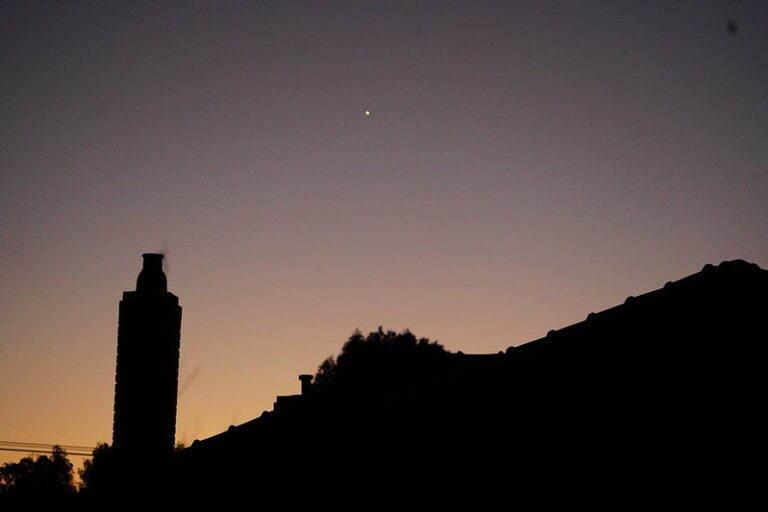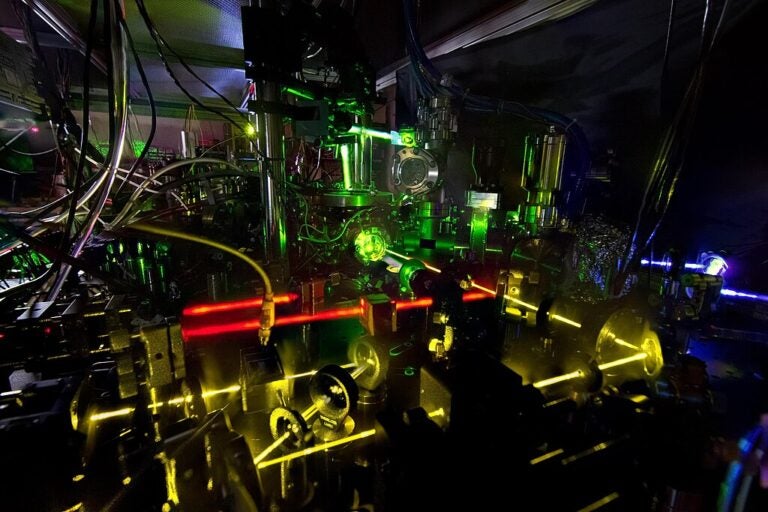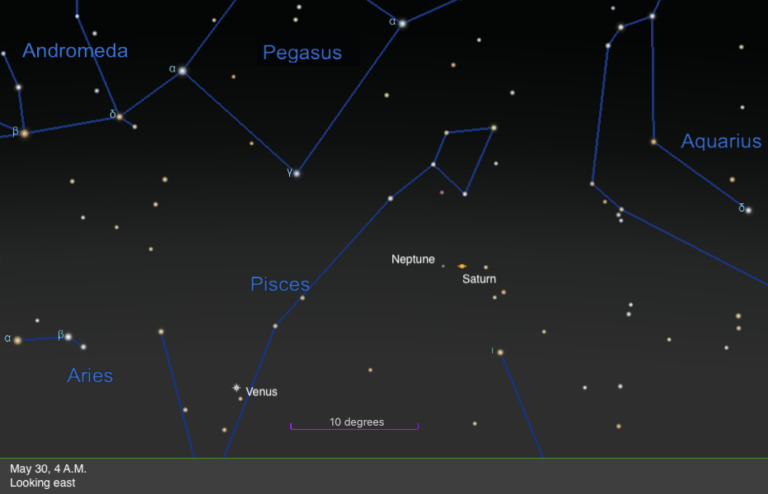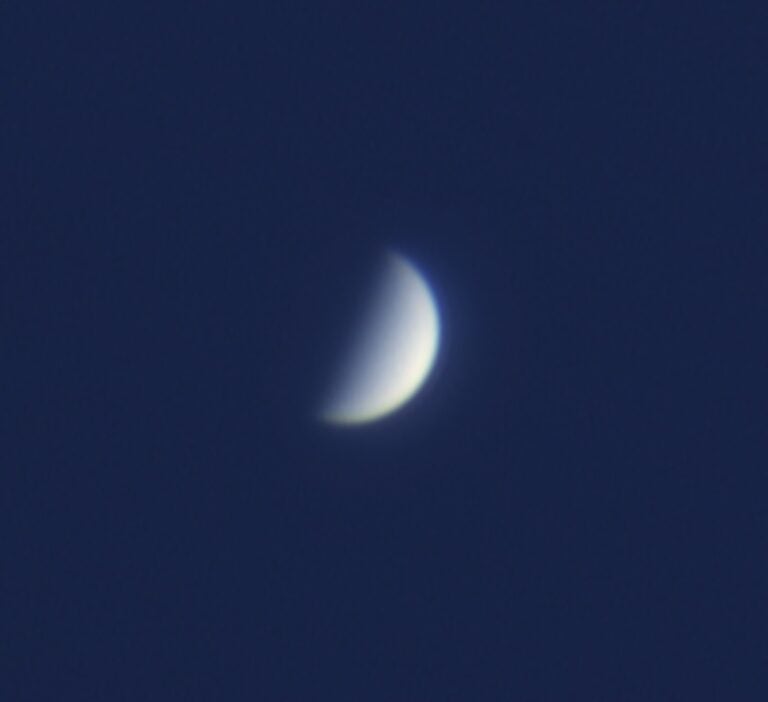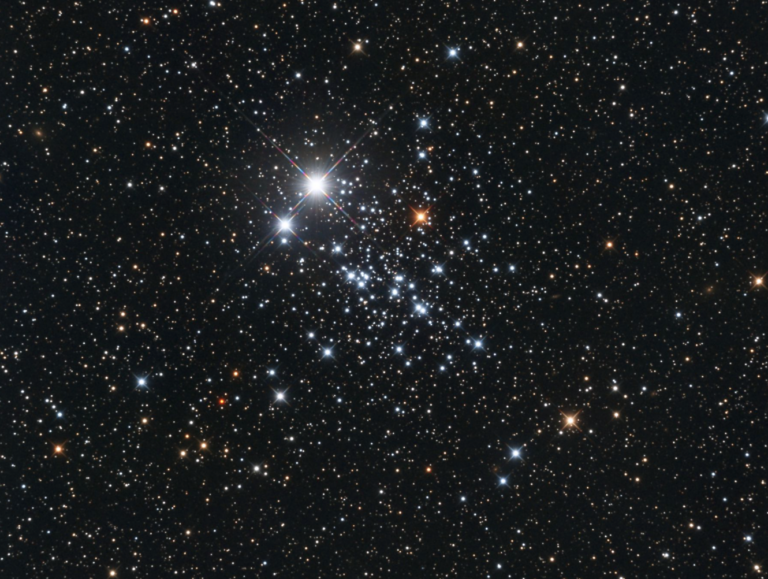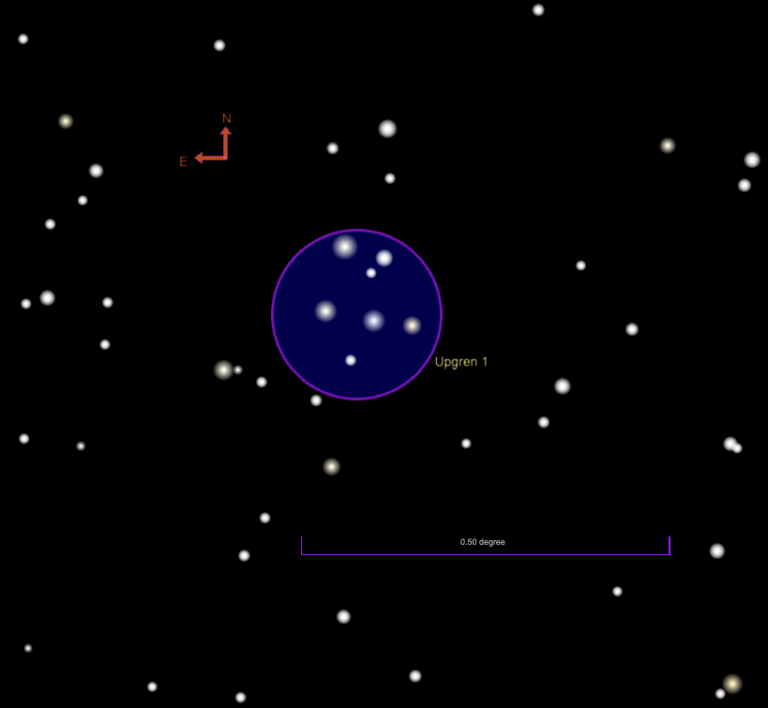One of the spring sky’s finest deep-sky objects, the Beehive star cluster (M44) in the constellation Cancer the Crab, appears high in the west once evening twilight fades away. The 3rd-magnitude cluster lies approximately 40 percent of the way from 1st-magnitude Pollux in Gemini to the similarly bright star Regulus in Leo. With naked eyes under a dark sky, you should be able to spot the Beehive as a faint cloud. But this star group explodes into dozens of stars through binoculars or a small telescope at low power.
Saturday, May 12
Although Comet PANSTARRS (C/2016 R2) glows faintly at 11th magnitude, this is a good evening to try to spot it against the backdrop of Auriga through an 8-inch or larger telescope. The comet resides exactly halfway between magnitude 0.1 Capella and magnitude 1.9 Beta (β) Aurigae. The comet should appear as a small fuzzball without much structure. Use fairly high power to get the best view.
Sunday, May 13
Brilliant Venus appears low in the west-northwest after sunset all week. Look for the blazing point of light starting a half-hour after sundown, when it stands 20° above the horizon. The planet shines at magnitude –3.9 and is by far the brightest object in the evening sky. As the sky darkens and the stars come out, you’ll see that Earth’s neighbor lies midway between Beta (β) and Zeta (ζ) Tauri, the horns of Taurus the Bull. If you point a telescope at Venus, the planet’s 12″-diameter disk appears 85 percent lit.
Mars rises around 1 a.m. local daylight time and climbs nearly 25° high in the south-southeast by the time twilight commences. The magnitude –0.7 Red Planet stands out against the backdrop of far eastern Sagittarius. If you point binoculars or a telescope toward the ruddy world this morning, you’ll see the magnitude 8.5 globular star cluster M75 just 0.3° to its north. A telescope also allows you to see some subtle surface features on the planet’s 13″-diameter disk.
Tuesday, May 15
Jupiter reached opposition and peak visibility just one week ago, and it remains a stunning sight all night. It appears low in the southeast during evening twilight and climbs highest in the south shortly after midnight local daylight time. Shining at magnitude –2.5, the giant planet is the night’s brightest celestial object once Venus sets around 10:30 p.m. Jupiter resides among the background stars of Libra the Scales, 2° east of Zubenelgenubi (Alpha [α] Librae). When viewed through a telescope, the gas giant’s disk spans 45″ and shows incredible detail in its cloud tops.
New Moon occurs at 7:48 a.m. EDT. At its New phase, the Moon crosses the sky with the Sun and so remains hidden in our star’s glare.
Saturn rises shortly after 11:30 p.m. local daylight time and climbs some 30° high in the south as morning twilight starts to paint the sky. The ringed planet shines at magnitude 0.3 against the backdrop of northern Sagittarius the Archer. When viewed through a telescope, Saturn shows an 18″-diameter disk surrounded by a stunning ring system that spans 41″ and tilts 26° to our line of sight.
Thursday, May 17
A wafer-thin crescent Moon appears 6° to the left of Venus this evening. Our satellite appears only 9 percent lit because it passed between the Sun and Earth just two days ago. You should notice an ashen light faintly illuminating the Moon’s dark side. This is earthshine — sunlight reflected by Earth that reaches the Moon and then reflects back to our waiting eyes. Use binoculars for the best view.
The Moon also reaches perigee, the closest point in its orbit around Earth, today. At 5:05 p.m. EDT, the Moon lies 226,040 miles (363,776 kilometers) away from us.
Dwarf planet 1 Ceres is the largest object in the asteroid belt, which lies between the orbits of Mars and Jupiter. It currently resides in western Leo, which appears high in the west after twilight fades to darkness. The magnitude 8.5 dwarf planet is easy to spot through binoculars or a telescope, particularly when it slides past magnitude 4.5 Kappa (κ) Leonis this evening. Point your scope at Kappa and then look for a magnitude 6.8 star half the Full Moon’s diameter to the south-southwest. Ceres lies between these two and slightly closer to Kappa.
Saturday, May 19
The Big Dipper’s familiar shape lies nearly overhead on May evenings. The spring sky’s finest binocular double star marks the bend of the Dipper’s handle. Mizar shines at 2nd magnitude, some six times brighter than its 4th-magnitude companion, Alcor. Even though these two are not physically related, they make a fine sight through binoculars. (People with good eyesight often can split the pair without optical aid.) A small telescope reveals Mizar itself as double — and these components do orbit each other.
Sunday, May 20
Venus crossed the border from Taurus the Bull into Gemini the Twins yesterday, and tonight it slides less than 1° north of the 5th-magnitude open star cluster M35. Binoculars or a telescope at low power will provide the best view of this pretty conjunction, especially once the sky grows dark around 10 p.m. local daylight time. The brightness disparity between the two objects is quite impressive: Venus appears some 4,000 times brighter than the combined glow from all the cluster’s distant suns.

